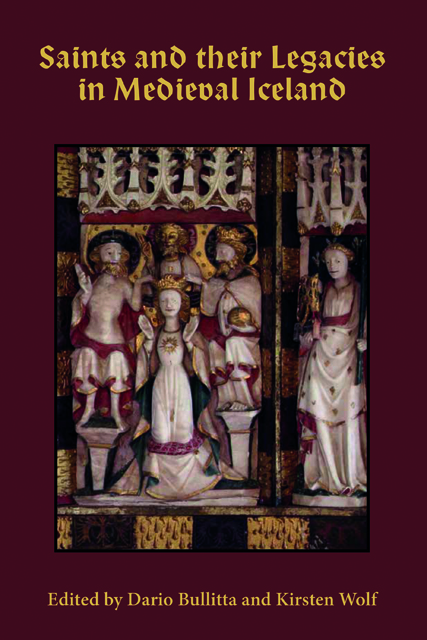Book contents
- Frontmatter
- Contents
- List of Illustrations
- List of Contributors
- Acknowledgments
- List of Abbreviations
- Introduction: The Splendor of the Saints
- Rannsǫkun Heilagra Bóka: The Search for Holy Books
- Heilagir Byskupar: Holy Bishops
- Heilagir Karlar ok Englar: Holy Men and Angels
- Heilagar Meyjar: Holy Maidens
- Bibliography
- Index of Manuscripts
- General Index
- Studies in Old Norse Literature
10 - The Veneration of St Michael in Medieval Iceland
Published online by Cambridge University Press: 14 January 2023
- Frontmatter
- Contents
- List of Illustrations
- List of Contributors
- Acknowledgments
- List of Abbreviations
- Introduction: The Splendor of the Saints
- Rannsǫkun Heilagra Bóka: The Search for Holy Books
- Heilagir Byskupar: Holy Bishops
- Heilagir Karlar ok Englar: Holy Men and Angels
- Heilagar Meyjar: Holy Maidens
- Bibliography
- Index of Manuscripts
- General Index
- Studies in Old Norse Literature
Summary
The Archangel Michael, whose name was believed to mean ‘[he] who is like God’, was known in the Middle Ages as the leader of the angels in the battle against the devil and his followers. Having cast Lucifer out of heaven at the beginning of time, he and other angels defend the souls of the dying against demonic attack, so that they will escape hell. These functions were often portrayed in medieval art: usually in armor, with a lance or sword, the Archangel defeats Lucifer and/or the Antichrist, depicted either as a dragon or as human. He is also shown weighing the good and bad deeds of souls at death (psychostasia).
St Michael in early Christian Scandinavia
St Michael is the only saint other than the Virgin Mary mentioned on the eleventh-century rune stones in Denmark and southern Sweden. References to him are found on one stone in Uppland, one in Gotland, one on Lolland, and four on Bornholm. Another stone, whose original location is unknown, is now part of the church in Linköping, Östergotland. By comparison, about three hundred stones mention God or Christ, and at least thirty-seven mention the Virgin Mary. No other saints are named. Since the object of these stones is, among other things, commemoration of the dead and the hope of a seamless transfer of their souls to Paradise, it is probable that St Michael was being invoked in the role of psychopomp.
There are at least twenty churches dedicated to St Michael in Denmark, of which two – in Slagelse and Schleswig – appear to be from the eleventh century. In Norway, it is the Viken area, closest to Denmark, that has the most dedications to the Archangel: twenty out of a total of twenty-eight according to Tue Gad. Given the common association of St Michael with heights, it is worth noting that the monastery of St Michael in Bergen (Munkeliv Abbey), founded in the 1130s, was on a hill on the Nordnes peninsula (though there were much more impressive heights nearby). The mountainous island of Selja may have boasted a church dedicated to St Michael as one of its five churches (or perhaps chapels). However, the cave in a cliff from which a healing spring trickles is associated with the Seljumenn and St Sunniva rather than the Archangel.
- Type
- Chapter
- Information
- Saints and their Legacies in Medieval Iceland , pp. 249 - 276Publisher: Boydell & BrewerPrint publication year: 2021



